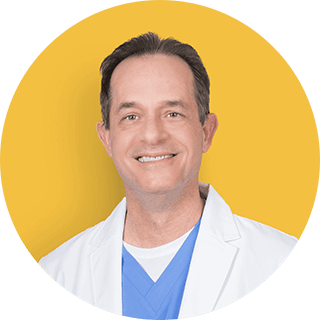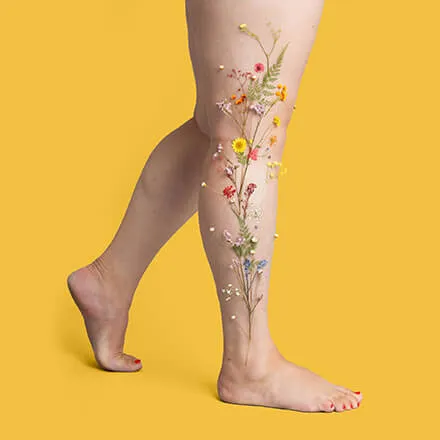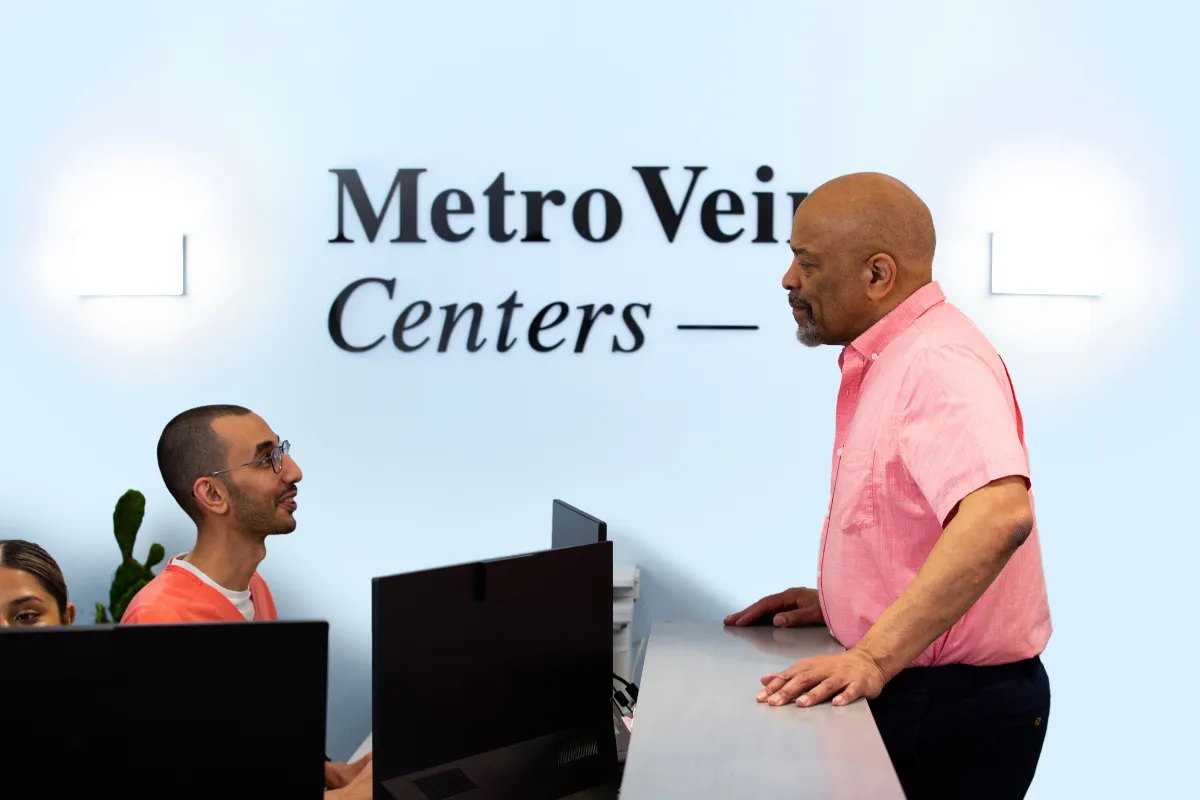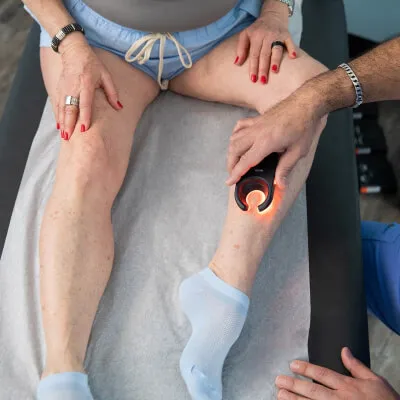They look similar. They both pump blood. You can see both in your legs. But are spider veins and varicose veins the same thing? We'll detail everything you need to know about both types of veins in this article.
Are spider veins just smaller varicose veins? Are varicose and spider veins harmless? Can you get rid of spider veins naturally? There's a lot of confusing--and unproven--information out there, so let's set the record straight.
So, are spider veins and varicose veins the same thing? In short, no. There are many similarities between spider and varicose veins, but when it comes to blood flow, health, and potential dangers, they are very different.
What are Spider Veins? And What are Varicose Veins?

Both spider and varicose veins are vein disorders, but typically only one--varicose veins--produces symptoms. Patients who suffer from larger varicose veins (about 1/3rd of the population) often report pain in their legs, itching, swelling, and a feeling of heaviness and tiredness in their lower extremities.
Varicose veins are larger, swollen veins that form due to poor blood flow in the legs. Valves that circulate blood throughout your legs start to malfunction, and as a result, pressure and fluid build up, causing cramping, pain, and visible veins.
Spider veins are smaller, web-like veins that typically produce few or no symptoms. Spider veins also form due to poor blood flow, but in very tiny pathways. They don't cause pain, are superficial (visible on your skin's surface), and are generally only cosmetic.
Spider Veins vs Varicose Veins: The Differences

So, What's the Difference Between Spider Veins and Varicose Veins?
The major differences between spider and varicose veins are size, color, shape, symptoms, and treatments. While one can be an indicator for life-threatening symptoms, the other is often just cosmetic. And while spider veins occur on the legs and also torso, face, or arms, varicose veins typically only occur from the legs up to the pelvis.
Here's how you to tell the difference between spider and varicose veins:
Size:
Spider veins are quite small--typically just one millimeter in length or less. They're tiny, thin, tree-like branches of veins that are typically on the legs, face, chest, torso, and arms. Varicose veins, on the other hand, are larger and often raised. They're also more likely to be raised, bumpy, and twisted.
Color:
Spider veins are most often red, blue, or purple. Varicose veins tend to be flesh-colored, greenish-blue, or purplish-red.
Shape:
Spider veins appear as tiny tree branches or mazes near the surface of the skin. They're typically flat or just slightly raised on the surface of the skin. Varicose veins, on the other hand, can be under the surface or on the surface, and are not just larger, but bumpy, raised, jagged, or even twisted--like a jagged river or a twisting pipe.
Symptoms:
Clients who come in with unsightly spider veins at Metro Vein Centers typically don't feel many, or any, symptoms. Occasionally there is itching or burning associated with spider veins, but this is not common. Varicose veins, on the other hand, can produce worrisome symptoms such as leg pain, heaviness and fatigue in the legs, swelling in the ankles or legs, bleeding, cramping, and more. Varicose vein symptoms worsen over time, and will not go away without medical treatment. While spider veins are generally nothing to worry about, varicose veins can be an indication of an underlying medical condition called venous insufficiency--which can lead to blood clots.
Treatments:
Spider veins treatments are generally more cosmetic, and are minimally invasive. Some of our more popular spider vein treatment options are sclerotherapy, a foam injection treatment, or excel V+ Laser, which uses a state-of-the-art laser to close damaged veins. Both vein treatments are done right in our offices, with no anesthesia needed! Treatments for problem varicose veins include everything from sclerotherapy to radiofrequency ablation to microphlebectomy. These treatments are also done right in our Metro Vein Centers offices, and use lasers, radiofrequency, tiny incisions, or injections, depending on how our vein doctors want to proceed.
Why Do I Have Spider Veins and Varicose Veins?
What causes varicose and spider veins? Quite a few factors, including family history, overall health, gender, age, occupation, and more. Sitting for long period of time, being on your feet for long periods of time, having a high BMI, and giving birth multiple times can all impact your vein structure. And sometimes, it's just hereditary.

The biggest difference between varicose veins and spider veins are the indications: Varicose veins can lead to serious conditions, or even blood clots.
While both spider and varicose veins on your legs are functions of vein disease, spider veins are generally not dangerous. Many patients have both spider veins and varicose veins, but if anything is an immediate threat, it's varicose veins. Varicose veins occur because of valve malfunctions within your vein. This causes fluid to leak throughout your veins, and can lead to the raised, bumpy, and twisted veins we often see on legs.
So How Can I Make My Spider and Varicose Veins Disappear?

Unfortunately there are no creams, supplements, oils, vinegars, or massage techniques to make your veins disappear naturally. They also will not magically disappear on their own over time, though eating a healthy diet and moving regularly is always a good idea.
The only way to make spider veins and varicose veins disappear is through treatment. Our minimally invasive vein treatment options at Metro Vein Centers are tailored to your particular problems, and we primarily treat veins on the legs at all of our different offices across NJ, NY, and MI.
The Sooner, the Better is True with Vein Treatment Options
Even if your varicose veins aren't causing much leg pain at this point, making an appointment with a vein specialist is a smart idea. Why? Early treatment is the best option for effective results, and vein disease--the underlying condition that causes varicose veins in the first place--is progressive.
At your consultation, your vein specialist will learn about your vein health and look at your specific situation. Your doctor will then determine whether you'd benefit best from a cosmetic treatment such as sclerotherapy, or a vein treatment resulting from a medical need such as Endovenous Laser Ablation. We accept over 200 insurance plans, and over 97% of our vein treatments are covered by insurance!

We look forward to meeting you!

Dr. Philip LoPresti
Meet Dr. Philip LoPresti DO, DABVLM, FACS, a board-certified vein specialist and surgeon with over 20 years of experience. Schedule an appointment with him in Queens, NY today.
Meet Dr. Philip LoPresti
Trusted insight from the nationally accredited, board-certified vein doctors at Metro Vein Centers.





